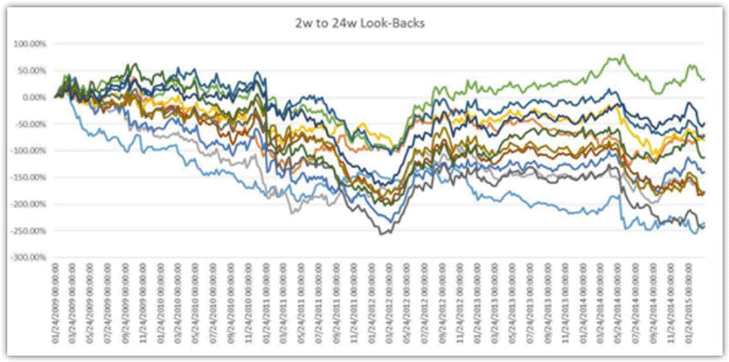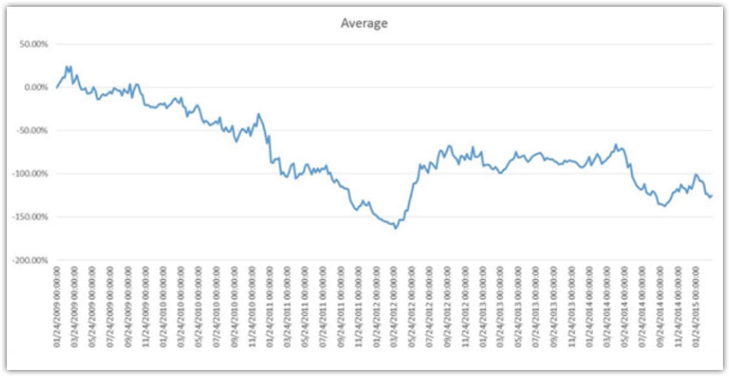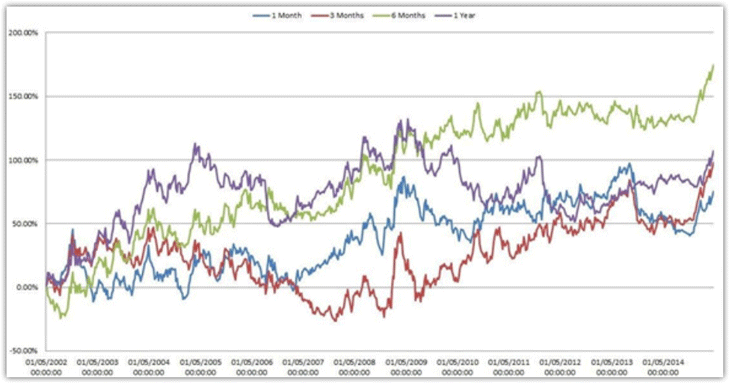Impulse trading strategy.
The impulse trading strategy is the simplest and at the same time one of the most effective approaches to trading in financial markets.

Trading on market impulses comes down to buying growing assets and at the same time selling falling ones.
By the way, a trader using an impulse strategy never gets into the essence of what happened, because they seem to float with the flow, chasing the wave-like movements of the market.
Reasons for the profitability of momentum strategies
To understand in which direction the purchase or sale is taking place, statistics are raised, namely, an analysis of a certain historical period is carried out in order to understand by what percentage the deviation occurs and what the trend of the asset is at this stage.
In fact, this strategy is based on the psychological behavior of the crowd. So, if a large player or a crowd begins to push the price to a certain point, then an increasing number of players begin to be involved in this movement, and the price, in turn, as if by inertia, takes more points than it should. Thus, due to the non-variability of crowd behavior, this approach remains relevant to this day.
Impulse trading is superior to the so-called optimizing trading on Forex, however, it has quite large drawdowns, which can be reduced by introducing a filter into the strategy in the form fundamental analysis or, more simply, news.
Period of statistical analysis and choice of currency pair
The most popular period for analyzing and selecting a statistical sample for impulse trading is three months. However, this period is taken from books and practically does not support any evidence, so if you are skeptical about this statement and would like to track the sample over a longer period, you will be right.
However, to prove the effectiveness of this sample, traders conducted testing in which different samples were taken with periods ranging from two weeks to six months. The result of this test can be seen below:

Having studied the testing results, you can see that out of 12 samples with different time periods, only one three-month one turned out to be profitable, so this option is the most optimal. The average efficiency for different samples can be seen below:

Time Series Momentum
Time series momentum strategies are considered the simplest price-following trading tactics.
So, the essence of this approach comes down to the fact that we will open a short position if the price is below a certain level, which we set some time ago during testing. We will also open a long position at the beginning of each week if the price is above its level a certain time ago.
Actually, we make a statistical sample and if the price at the beginning of the week is above a certain average value, we buy, and if it is lower, we sell.
Any practicing Forex trader will have a completely logical question: what currency pairs are best to use?
Initially, we conducted a huge thirteen-year test on four currency pairs, namely EUR/USD, GBP/USD, USD/JPY, and USD/CHF. The principle was as follows: a position was opened at the beginning of the month, depending on the location of the price relative to the statistical sample, and was held for exactly a month, at the end of which the transaction was closed.
The test result is below:

The result of testing the strategy turned out to be quite impressive, since the profitability of all options exceeds 100 percent of the deposit.
If you look closely at the chart, you will notice that to determine the impulse, historical data for 1,6,3, 12 months was taken and the thief strategy showed excellent results in all variants. In conclusion, it is worth noting that impulse trading, which is based on the analysis of historical data and the search for impulse over a long period, is more similar to investing than to active trading. However, this approach allows people with little employment to profit from the market, which makes this approach very attractive.

